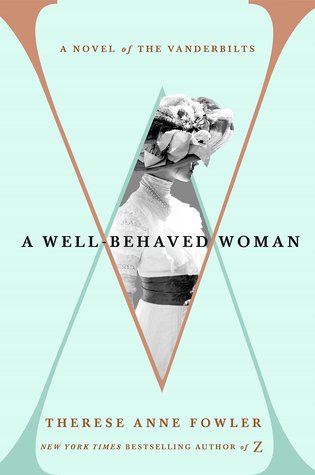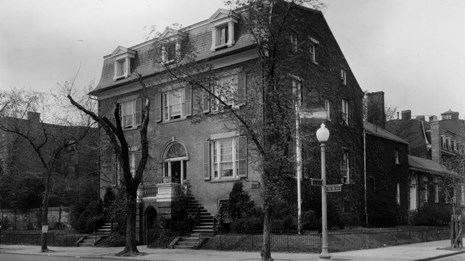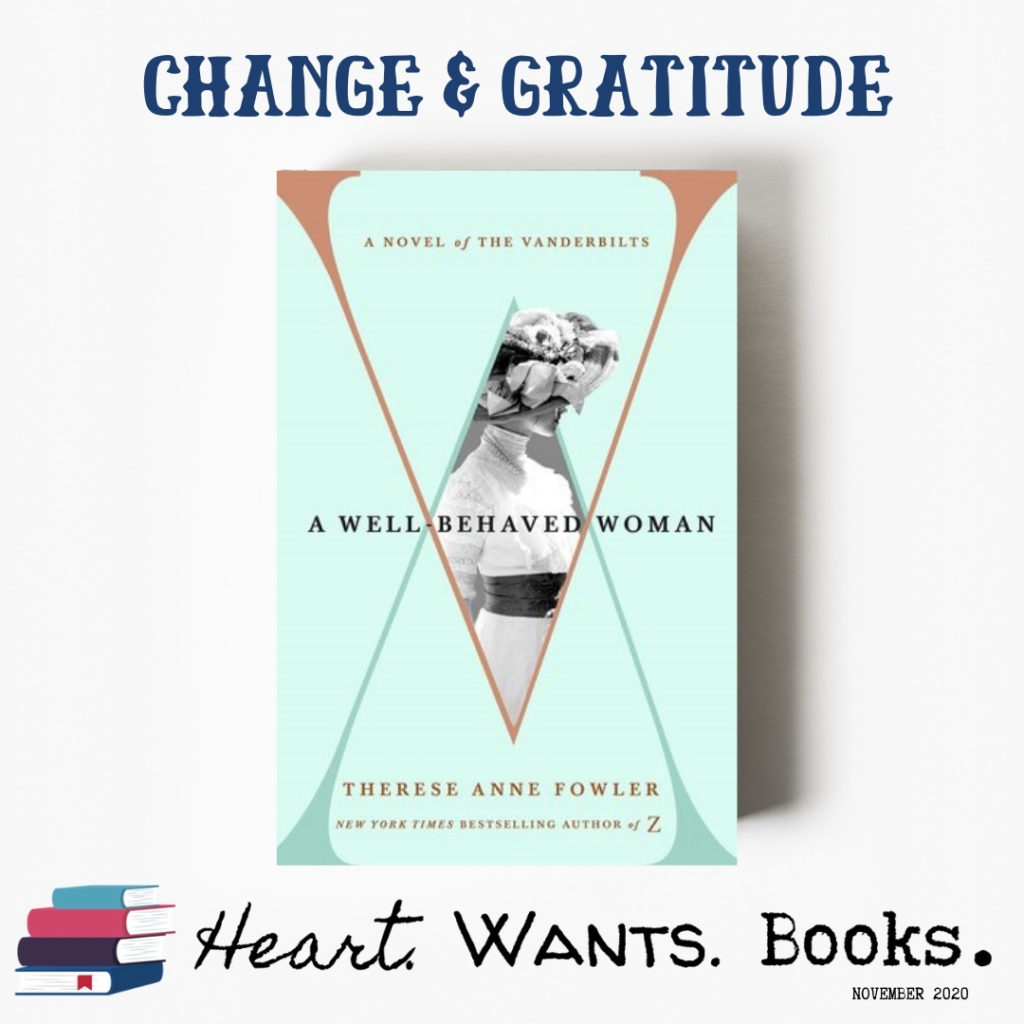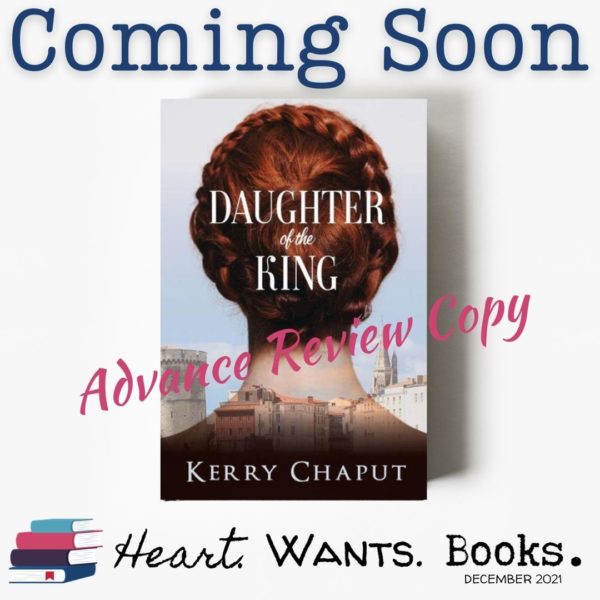A Well-Behaved Woman by Therese Anne Fowler November 12, 2020

The following post includes affiliate links. More details here.

Nostalgia can set the mood, and for me to be ready for Christmas, I need to listen to the theme of 1995’s Little Women. I want to see Amy excitedly take the orange off the cake, and then pout and return it. I want to pour my soul into the pages of the story of the March women as they do hard things to make ends meet and to love on their neighbors, poor and rich. Join me in loving on our bookish neighbors by granting them the gift of discussing Louisa May Alcott’s classic tale, Little Women on Friday, December 11 at 7:30 p.m. CST. Watch, listen, or read, but refresh your soul with this coming of age tale of love, family, and finding oneself, even if what you find isn’t what society wants to see. Register here to join us.

I love it when a solid thread links the books I’m reading together and ties them up like a present in a nice little bow. I have one of those for you, but first, I’m going to grasp at something different. Travel with me in time, back to the last virtual book club when we discussed The Southern Book Club’s Guide to Slaying Vampires by Grady Hendrix. That book starts with the ending, literally. The author’s notes come first, which isn’t traditional but really works for this book, then there’s the prologue. The first line of the prologue is “This story ends in blood.” It starts with the ending, which is also, well, not traditional. Let’s go back a bit further to The Glass Hotel by Emily St. John Mandel. The first phrase of that book is “Begin at the end,” and that is precisely where that story begins. So when this week’s book, A Well-Behaved Woman: A Novel of the Vanderbilts by Therese Anne Fowler started with “When they asked her about the Vanderbilts and the Belmonts,… Alva said it all began quite simply: Once there was a desperate young woman whose mother was dead and whose father was dying almost as quickly as his money was running out” I was SO here for this story and the way it was told. For me, expectations are huge and I hate spoilers, so there’s a balance to be found, but it’s also part of why I love starting with the end because while I know where we’re going, I don’t know what the journey is going to look like, and darling readers, the journey is the best part (see also: reasons I love romance novels). Late in the book, “When they asked her about the Vanderbilts and the Belmonts” is repeated, and this time the answer starts with “Alva said nothing is ever quite the way you think it’s going to be…” and she’s so right, but the journey was epic, gut-wrenching, redeeming, and phenomenal.

Going into A Well-Behaved Woman: A Novel of the Vanderbilts, I knew I adored the author, and I knew it was about a Mrs. Vanderbilt. That’s it. I quickly learned (page 1 = not a spoiler) the book starts in 1874 (compared to last week’s Bringing Down the Duke which starts in 1879), so for our solid linking thread, we have an across the pond comparison that is still very much set in high society, because if the US had an equivalent to Britain’s peerage in the Gilded Age, the Vanderbilts, Belmonts, and Astors would assuredly have been at the height of power within the ton.

A Well-Behaved Woman was hard to take in places, predictably so because Alva is a strong, forward-thinking woman and she’s in a society marriage in the late nineteenth century. But it’s also an important story. It’s important because anything that truly matters is worth the risk, the fight, and the hardships that come along with sticking to your gut and taking a stand for what is right. It’s important because of all the women who are and were treated poorly as if asking for something outside the home means that what goes on within the home doesn’t matter. Alva is a woman who needs a task to set her mind to and master, whether that’s saving her sisters from destitution, raising her husband’s family in society, or designing fabulous homes that are showpieces of art and artisans. I’m here for stories of people who fight for their ability to chase their dreams, even if that dream is “merely” having a full belly, employing a formerly enslaved person as your lady’s maid, and finding a semblance of happiness. May we all have enough to eat, the care of a good, valued person, and some joy in this world. As with our suffragettes last week, the fights for women to be seen as equal are still ongoing, but new with this week’s title is the fight to employ and befriend someone who doesn’t look like society says they should. Alva may not have really had a Black lady’s maid (author’s notes are essential darlings), but she was setting up an office for women’s suffrage in Harlem when our lawmakers were in the process of formalizing Jim Crow laws, and that feels like a big deal to me.
On a different note, one of my favorite pieces of the book was when her brother-in-law George appeared. I was waiting on it (and come to find out, so was Ashley), as this man who would dedicate himself to building a lavish mansion, a robust farm, and one of the east’s biggest reforestation efforts of his day (thank you Spying on the South by Tony Horwitz from May). George and Biltmore are so much more though. I’ve had the pleasure of visiting in person, albeit decades ago, and on the page in The Serafina Series by Robert Beatty and The Last Castle by Denise Kiernan. When I find a novel about George that is as glorious as this one about Alva, Ashley will not should on me, she will rejoice, and we will bring it to you with pride! If you know of one, please slide into our DMs or comment loudly for all to hear please! (Unlike when my mother made me read so very many books on Andrew and Rachel Jackson before visiting the Hermitage, there was no required reading before our visit to Biltmore. I feel slighted and I need a redo. Ashley has already committed to obliging both on the page and for a HWB field trip.)
Clearly I have a lot of feelings about A Well-Behaved Woman, so I’m going to wrap it up. I believe I was at about 6% when I texted Ashley that I was beyond delighted to be back with Fowler’s writing because it’s just lovely (if you recall, we wrote about her most recent book, A Good Neighborhood here). This book continued to deliver, and therefore I’m giving the book an emphatic four stars. I may well reread it, and have already gone back to revisit a couple of my favorite pieces of the tale.
What’s a book that was tough, but you still really enjoyed either because the story was amazing, the writing was beautiful, or both?
~Nikki

Readers, I did a terrible, terrible thing: I became reacquainted with the historian that lives inside my head. That historian routinely peeks out like a groundhog in February and wants to be acknowledged. Today, for the span of about 3 hours, this historian took me on a little adventure through Wikipedia and some surrounding websites, because that’s what this historian does. It loves to take adventures into random historical topics and find threads like the one Nikki found above, and then keep going and connecting things like a groundhog in its burrow. So, let’s plunge on in…
I usually take quite a bit of time and talk about the author, their history, other notable works, etc., but I covered all of that info in our July post on A Good Neighborhood. I am, however, going to burrow deep into Therese Anne Fowler’s authors notes for A Well-Behaved Woman. Before doing so, I want to mention two things: 1) I want to remind you that her 2013 novel, Z: A Novel of Zelda Fitzgerald, was made into a mini-series and before I re-watch that I intend on finally reading the novel it was based upon. I’m ready to have Fowler’s entire backlist handled because I adore the pictures she forms in my head. And, 2) in her acknowledgements Fowler says: “Earlier still in that journey [to become a novelist] was John Kessel, the first real-life, honest-to-god author I ever met, professor of literature and creative writing, first to tell me (in 2000) that I might, if I worked at it, have what it takes to write publishable fiction. He is my Oliver. The journey was long, the path twisted, but Reader, I married him.” (Yeah, that’s a quotation from Jane Eyre, who, spoiler alert, is slated to be Miss Jane in January 2021!)

May we all find our Olivers, the people we marry who love and support us through whatever life brings. Today, November 12th, I am thankful for the twisted path that brought me to be able to celebrate two marriages to the same man (civilly in November 2009 and sacramentally in February 2010). Here’s to our eleventh year together and a throwback to our fifth anniversary which we spent at George Vanderbilt’s Biltmore Estate, the first stop on our historian’s burrow tour. Fowler doesn’t discuss what Alva thought of George’s Biltmore house or if she ever visited ‘America’s Largest Home,’ but she does mention to Oliver before he admits his love to her that her daughter was in England (Consuelo had just married the Duke of Marlbourough) and her two sons were away to spend the Christmas holiday of 1895 with the Vanderbilts in North Carolina. That was 125 years ago this Christmas, as Biltmore Estate’s website so kindly has been reminding me through email and on social media for months now, even through these pandemic times. [AND THEN Nikki goes and sends me the video for this year’s Biltmore Christmas tree raising and I’m three clicks away from booking a weekend trip because Biltmore at Christmas has been on my bucket list for at least six years.] As Nikki also mentioned above about our May post Travels with Tony and Fred, Frederick Law Olmsted, famous landscape architect of Central Park fame, also helped design the formal gardens of Biltmore Estate. Important to remember, however, Richard Morris Hunt was the architect of the house and George was introduced to his work by none other than his brother William and sister-in-law Alva, since she had used him to build and renovate multiple houses and a church for her during his career. Fowler talks about how Alva loves the process of designing, renovating, and decorating homes and buildings. Architecture was a great creative outlet for her and she pursued her creative real estate endeavors throughout her life even after the death of Oliver. The last new mansion she had built by the firm of Hunt & Hunt – started by Richard Morris Hunt’s two sons – was Beacon Towers on Long Island. It was finished in 1918, closed by Alva in 1925, then sold to William Randolph Hearst in 1927. It was demolished in 1945, but was said to have been the inspiration for Jay Gatsby’s house in F. Scott Fitzgerald’s The Great Gatsby. It seems that Fowler has Alva to thank for part of the inspiration of her novel about Zelda Fitzgerald, too.

In Fowler’s notes, she discusses Alva’s involvement with and co-founding of the National Women’s Party (NWP) among Alva’s other notable suffrage and equal rights causes. In 1929 she purchased a house in the Capitol Hill neighborhood of Washington D.C. that is now called the Belmont-Paul Women’s Equality National Monument, a museum and the first national monument dedicated to women’s history in the United States. And now, I’m going to dig deeper into the historian’s burrow… As I was reading the Wikipedia page about the history of this historic house connected to Alva, there is so much more historic provenance that touches this building. In 1965, Congress was petitioned to purchase it as the Vice-Presidential home but it was deemed too small and not far enough away from the workings of government and still housed the National Women’s Party archives, but the house was originally built around 1800 as the home of the Sewall family. The Sewalls rarely lived in the house, but one notable Secretary of the Treasury lived there! Not Alexander Hamilton as you might have thought, but the fourth Treasury secretary under Hamilton’s nemesis Thomas Jefferson, none other than Albert Gallatin. – Yeah, I know, readers, you’re thinking who the actual… is this Albert Gallatin person, I’ve never heard of him. Well, he did some cool stuff, too! Like help found New York University, but most notably his name graces the town that I call home! (even though he probably never travelled to Tennessee) – Here’s where the burrowing gets fun! On Alva’s wikipedia page the information about her early family life is as follows: “Alva Erskine Smith was born on January 17, 1853, at 201 Government Street in Mobile, Alabama, to Murray Forbes Smith, a commission merchant, and Phoebe Ann Desha. Murray Smith was the son of George Smith and Delia Forbes of Dumfries, Virginia. Phoebe Desha was the daughter of US Representative Robert Desha and Eleanor Shelby, both originally from Sumner County, Tennessee.” So you see, Readers, Alva’s maternal grandparents were from Gallatin! And this is where my burrowing is gonna stop, cause there’s no reason to see deeper into the burrow where not only was Alva born in Alabama, but so was Zelda Sayres Fitzgerald…oh, whoops!
Do you ever read a story and love it so much that you have to burrow deep into the themes and surrounding historical context to continually live in that world? Yeah, me too, Obvs. So, maybe in the future, after we’ve read Z you might also join us in reading Karen Harper’s novel American Duchess: A Novel of Consuelo Vanderbilt.
~Ashley

PLEASE SUPPORT US WHEN YOU SHOP BY FIRST CLICKING ON THE IMAGES BELOW:








